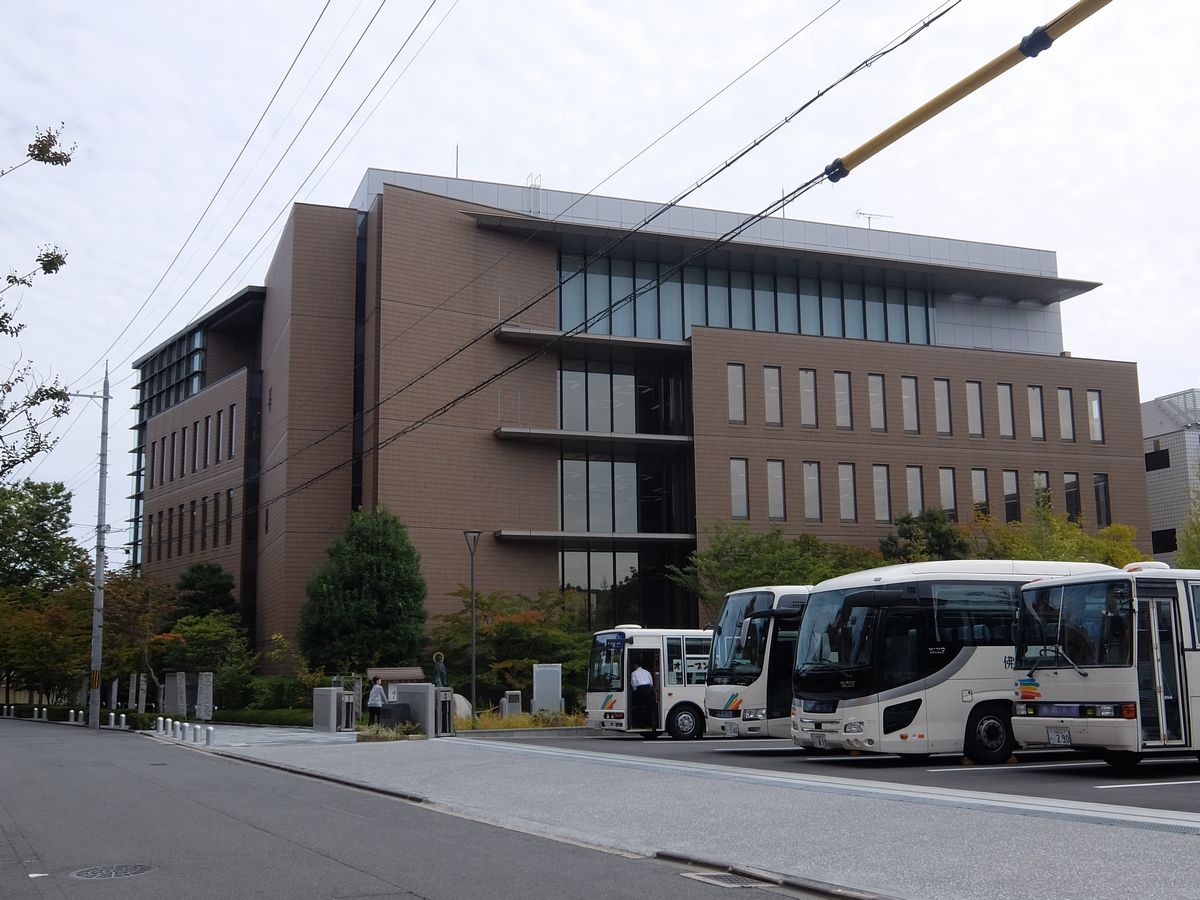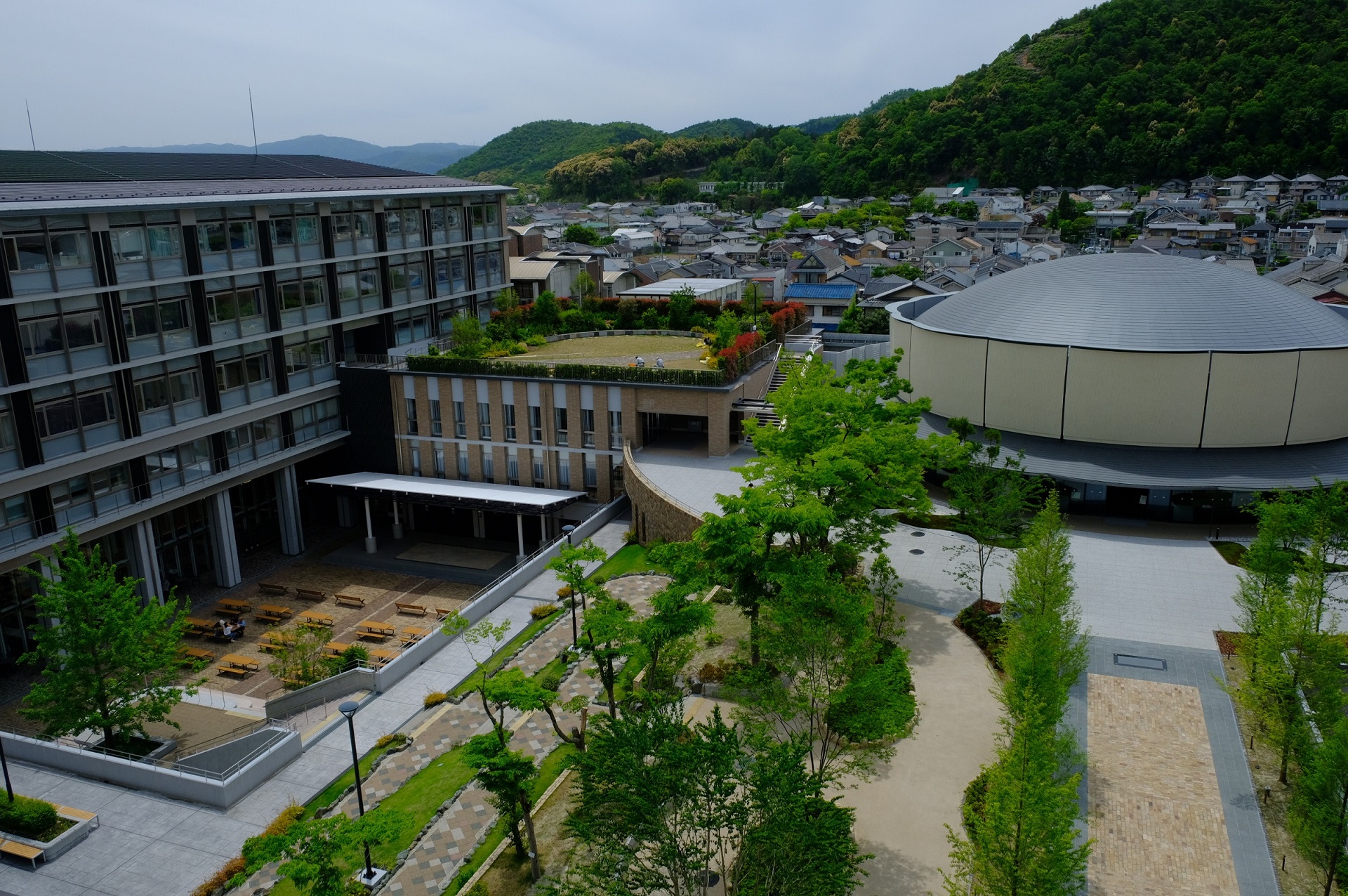Thinking about studying in Japan but want a campus that blends tradition, community, and hands‑on learning? Bukkyo University (Kyoto) could be a great fit. This private university is rooted in Jōdo‑shū (Pure Land) Buddhist heritage yet offers modern programs across seven faculties—from Education and Social Welfare to Health Sciences. Its main Murasakino campus sits in a quiet, temple‑lined neighborhood, while the newer Nijo campus houses state‑of‑the‑art health training facilities. International students get practical support with visas, scholarships, housing, and a dedicated dorm, alongside cultural exchange events that make it easy to meet Japanese classmates. Here’s a clear, evidence‑based look at Bukkyo University for overseas applicants.







Quick Facts: Bukkyo University (Kyoto)
| Type | Private University (Official English site) |
|---|---|
| Total Students | ≈ 14,000 (incl. correspondence programs) (Study Kyoto) |
| Campuses | Murasakino (main) & Nijo (School of Health Sciences) (Campus & Access) |
| Faculties/Schools | Buddhism; Letters; History; Education; Sociology; Social Welfare; Health Sciences (Academics) |
| Tuition Fees (UG) | Enrollment fee ¥200,000; Yearly tuition (Humanities) ¥870,000; Faculty of Education ¥920,000; Facility cost ¥200,000 (Study Kyoto) |
| Gender Ratio | Not publicly disclosed in English (university publishes selected stats in Japanese) |
| Intl‑Student % | Not publicly disclosed for Bukkyo; in Japan overall, ~90%+ of international students are from Asia (Nippon.com (2024)) |
| Students per Staff | Not published in English; varies by faculty |
Campus Maps
Murasakino Campus (Kyoto – Main)
Address: 96 Kitahananobo-cho, Murasakino, Kita Ward, Kyoto 603-8301, Japan
Nijo Campus (Kyoto)
Address: 7 Nishinokyo Higashitogano-cho, Nakagyo Ward, Kyoto 604-8418, Japan
Mission, History & Founding Story
Bukkyo University grew out of a Buddhist learning circle established in 1868 at Genkō‑in within Kyoto’s famed Chion‑in Temple—the head temple of Jōdo‑shū (Pure Land Buddhism). That circle evolved into Kōtō Gakuin in 1912, relocated to the current Murasakino site in 1934, and became a full university in 1949 during Japan’s postwar higher‑education reform. The founding spirit—cultivating “proactive people with exalted personality and insight” grounded in Buddhist values—still underpins Bukkyo’s learner‑centered teaching today. About (Official) / History (Official)
Across the 20th century, Bukkyo steadily expanded from Buddhist studies into the humanities and applied social fields that resonate with Kyoto’s cultural landscape and Japan’s evolving social needs. Major milestones include the Faculty of Literature (1965) and the Faculty of Sociology (1967), followed by the Faculty of Education (1989) and Faculty of Social Welfare (2004). In 2006, Bukkyo launched the Faculty of Health Sciences—later moving its practical training hub to the Nijo Campus in 2011—reflecting growing demand for nursing and rehabilitation professionals. The university also deepened its heritage scholarship with the Honen Buddhist Studies Research Center (2014). History (Official)
Today, Bukkyo operates two campuses about ten minutes apart by car. Murasakino—a quiet, residential enclave near Daitoku‑ji and Imamiya Shrine—hosts classrooms, a large library (≈1,000,000 books, ~1,000 seats), and student services. Nijo—next to JR/subway Nijo Station—houses seven floors (plus a basement) of health‑skills labs and simulation spaces. Both locations keep students close to Kyoto’s living history while offering modern facilities for research, practicum training, and student life. Campus & Access (Official)
Key Strengths & Unique Features
Kyoto‑Embedded Humanities & Buddhist Studies (Flagship Area)
Bukkyo’s name literally means “Buddhism,” and its humanities are steeped in Kyoto’s cultural fabric. The Faculty of Buddhism explores doctrines, history, and lived practice, while the Faculty of Letters covers Japanese, Chinese, English/American studies, and clinical psychology. The Faculty of History offers field‑based coursework—like a Kyoto Studies cluster spanning archaeology, geography, ethnology, and arts—leveraging access to temples, shrines, archives, and museums across the city. For students who want deep cultural literacy with practical fieldwork, this “Kyoto‑as‑classroom” approach is a signature advantage. Academics (Official)
Flagship focal points within the humanities
- Buddhist Studies with Jōdo‑shū roots and long‑running clergy training, plus a university Museum of Religious Culture for material culture exposure. THE profile
- Kyoto Studies in the Department of Historical Culture (archaeology, ethnology, cultural arts) backed by local fieldwork. Academics (Official)
Teacher Education & Practical Licensure Pathways
The Faculty of Education (including Early Childhood Education) is a major draw for students aiming at school‑based careers. Coursework integrates pedagogy with on‑site observation and teaching practice in Kyoto schools, and Bukkyo has a track record of international teacher‑training activities—such as exchanges with the University of Hawaiʻi’s College of Education—which expose students to English‑medium classrooms and comparative education ideas. For international students who plan to qualify and work in Japan’s education sector, Bukkyo’s counseling and exam preparation support also matter. Academics (Official) / Hawaiʻi COE news
Social Welfare, Sociology & Psychology with Community Impact
In Japan’s aging society, the Faculties of Social Welfare and Sociology connect classroom theory with field placements and seminars that address real community needs—from public policy and social services to clinical psychology pathways. Kyoto provides a dense network of NGOs, care facilities, and municipal projects, which makes it easier to find supervised practice and capstone themes. These fields naturally align with Bukkyo’s founding mission to contribute to the welfare of people and communities. Academics (Official)
Health Sciences @ Nijo: Urban Access, Modern Labs
Opened in 2011 beside JR/subway Nijo Station, the Nijo Campus centralizes nursing, physical therapy, dan occupational therapy training. The building has seven floors plus a basement, outfitted with simulation and skills labs and ample study lounges—ideal for clinical skills development and commuting convenience. Proximity to hospitals and rehabilitation centers across Kyoto adds practical value for placements. Campus & Access (Official)
Student Life for Internationals
- International Exchange Center: Help with scholarships, tuition reduction/waivers, residence status (visa), dorm entry/exit, and daily‑life consultations. Staff can even handle Immigration Bureau paperwork on your behalf. Student Support (Official)
- Events & cultural exchange: President‑hosted meetups, domestic trips, and language/culture activities—easy ways to make Japanese friends and practice Japanese. Exchange with International Students (Official)
- Dedicated dorm: International House “Chion” is the main dorm for overseas students—15 minutes by bike to Murasakino. Dormitory (Official)
- Facilities: Large library (~1,000,000 volumes, ~1,000 seats), gyms, and campus dining. Campus & Access (Official)
Partner Institutions & Exchange Options (Outbound)
Bukkyo maintains exchange links with 18 partner institutions in 7 countries/regions. Destinations span East & Southeast Asia, the U.S., and Australia. Highlights include Deakin University (Australia), University of Hawaiʻi at Mānoa (U.S.), Jilin University (China), HUFLIT (Vietnam), and several Buddhist universities and research institutes in Korea, Taiwan, and Mongolia—great for language immersion, education practicums, and area studies. International Exchange Programs (Official) / THE profile
- Sample partners: Deakin University (Australia); University of Hawaiʻi at Mānoa & College of the Desert (U.S.); Jilin University & Beijing Language and Culture University (China); Tzu Chi University & Chung Hwa Institute of Buddhist Studies (Taiwan); Wonkwang/Dongguk/Kangnam/Joong‑Ang Sangha (Korea); HUFLIT (Vietnam); Zanabazar Buddhist University (Mongolia). Partners list (Official)
Local Climate & Lifestyle (Kyoto)
Weather: Kyoto has four distinct seasons with humid summers and crisp winters. In the last several years, monthly mean daily maximums in July–August typically exceed the low‑30s °C (hot and humid), while January nights often hover near 0–2 °C (cold, occasional light snow). Plan for heat‑mitigation in summer (light clothing, hydration) and layered clothing in winter. Source data: Japan Meteorological Agency’s Kyoto station (WMO 47759) monthly climate tables. JMA climate stats (Kyoto)
- Safety: Japan is widely regarded as safe for students and solo travelers; Kyoto benefits from this national context. Always follow local advisories and common‑sense precautions. Travel Noire (overview)
- Cost of living: Kyoto is generally cheaper than Tokyo. Expect monthly student living costs roughly in the ¥120,000–¥170,000 range depending on rent and lifestyle. Study Kyoto: Living Expenses and a comparable breakdown by a local university: Ritsumeikan (estimate)
- Student city perks: Kyoto’s international‑student network (events, discounts, info) helps newcomers settle in and explore the city affordably. International Student Study Kyoto Network
International Student Statistics
At Bukkyo: The university’s English pages do not publish an official headcount or percentage for international students by faculty or country. The university does, however, operate a dedicated dorm and support desk, and it reports examples of overseas students’ career placements (see below). Student Life (Official) / Career Support (Official)
Context (Japan): Nationwide, the latest figures show a record high of international students in 2024, with the vast majority (≈92.5%) coming from Asia; Europe and North America make up much smaller shares. Kyoto mirrors this trend thanks to strong Chinese, Vietnamese, and other Asian enrollments. Nippon.com (2024 data digest) / Study in Japan (MEXT/JASSO)
Career & Graduate Prospects
Bukkyo’s Career Affairs Section provides one‑to‑one advising, job‑hunting seminars, and employer briefings—plus customized guidance for international students entering Japan’s unique shūkatsu (job search) cycle. Example hiring destinations for Bukkyo international graduates include companies in IT, travel, retail/automotive, education, and social welfare in both Japan and abroad. Career Support (Official)
- Education: Typical outcomes include public/private school teaching (after licensure) and roles in early childhood education. Faculty of Education (Official)
- Social Welfare / Psychology: Social workers and caseworkers in Kyoto and Kansai; roles in NPOs and municipal offices connected to community welfare. Academics (Official)
- Health Sciences: Nursing, physical therapy, and occupational therapy placements facilitated by Nijo‑area clinical partners. Nijo Campus (Official)
- Humanities: Graduates enter publishing, cultural institutions, tourism/hospitality, language services, and international exchange organizations—leveraging Kyoto’s rich cultural economy. Academics (Official)
Why Bukkyo for Overseas Applicants? (One‑minute recap)
- Location: Calm, study‑friendly neighborhoods in Kyoto; easy access to the city center and cultural sites. Campus & Access
- Programs: Seven faculties spanning humanities to health—plus fieldwork‑rich Kyoto Studies. Academics
- Support: Visa, scholarship, and housing help; international dorm; frequent exchange events. Student Life
- Affordability: Humanities tuition around ¥870,000 per year; Education ¥920,000—competitive for a private Kyoto university. Study Kyoto
- Global links: Exchange options across Asia–Pacific and the U.S., including Deakin and UH Mānoa. Exchange Programs

